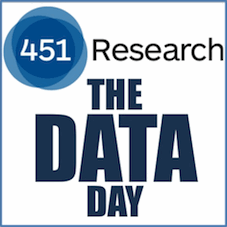January 13th, 2012 — Data management
March 3rd, 2011 — Text analysis
On Tuesday March 8 I’m doing a webinar along with Isys Search Software and Sybase about text-aware applications. The full title is “Text-Aware Software Solutions: What Defines Excellence?”
‘Text-aware applications’ is a phrase we coined back in 2005 as part of the process of writing a major report on the subject in which we looked at the various application areas (CRM, ERP, BI etc) that could benefit from a deep understanding of unstructured data.
As the first key finding from the report said:
The future success of companies and organizations will increasingly be based on their ability to unlock hidden intelligence and value from unstructured data, and text in particular.
The webinar on March 8 looks at the role of document filters in making applications text-aware, which is something I’ve talked about here before.
It’s at 10am PT/1pm ET/6pm UK. You can register here.
September 23rd, 2010 — Content management, Search
Document filters. There’s a phrase to conjure up excitement in any technologist eh? No? Didn’t think so. But look more carefully at what is going on and it does get more interesting, trust me.
I was moved to expand in this by Isys Search Software’s recent attempt at guerilla marketing at Oracle Open World which it tweeted about here:
isyssearch: ISYS goes guerrilla; kicked out of Oracle Open World party after projecting our branding on the Metreon http://tinyurl.com/272fync #oow10
Quite apart from what it says about Isys and how much it’s changed in the last two years – a bit like the nerdy guy in the playground trying to act tough – it shows how important some people – including me – think these filters have become.
There are two main companies selling products that enable the opening and viewing of myriad file formats (400 is a common number cited by both the vendors and their customers). So when a search engine comes across a Word 1997 or even something like Wordstar 4 file, how does it open it? Usually using one of two products: Oracle’s OutsideIn or Autonomy’s IDOL KeyView.
Both products came to these companies via acquisitions: Autonomy buying Verity in November 2005 and Oracle buying Stellent in 2007, (and Stellent, as it wasn’t known then, buying Inso in 2000). It’s also interesting to note that Isys still refers to them as Inso in its marketing even though the product has been called something else for years.
Like all OEM technology, these filters aren’t easily ripped out and replaced. And that’s what these two vendors like about them. It gives them a a foot in the door at software companies that they can try to expand upon, and quite often they do. The temptation of course is to use the difficulty to remove them as a point of leverage to crank up prices.
And that’s what we’re hearing Autonomy is doing from a number of vendors. We haven’t heard anything similar regarding Oracle, it should be noted. Autonomy has a reasonably significant OEM technology stream and as we have mentioned previously Autonomy regularly brags about its OEM wins, without specifying whether its KeyView or the full IDOL engine being OEMd. Incidentally after that earlier post Autonomy contacted us to say that KeyView isn’t the result of the acquisition of Verity and all it bought was the name. That’s despite what was said at the time, including its own press release shortly after the acquisition bragging about its features. But then Autonomy’s marketing these days increasingly requires a willing suspension of disbelief.
Isys has had this technology for a while but never sold it separately. But now it is finding quite a bit of success among software vendors nervous about having a key piece of technology owned by Autonomy or Oracle because they’re often search and/or content management companies; two markets in which both companies play. dtSearch, another veteran OEM provider also provides similar filters.
So for the first time in a long time, ISVs have a choice beyond the main two in filters and in their close relatives, connectors, the software to connect search engines to databases, content management systems and other repositories. In the often incestuous world of information management software, where vendors both compete and sell to one another, these have become points of leverage that customers may not notice in terms of functionality, but they certainly do in terms of the price they have to pay for their software.
March 7th, 2008 — Search, Text analysis
I’ve gathered all my current thinking on potential M&A in enterprise search in a SectorIQ that we published earlier this week to our customers. In it, I look at four main potential targets plus a few other small ones and look at a few of the likely acquirers. (This is the way we write all our Sector IQs, btw and they’re a great way of getting a quick grasp on what might be coming down the pike in any particular sector of the IT industry)
Fortunately those of you that are not our customers (yet!) are able to read it via our arrangement with the New York Times DealBook section. Click here to see the NY Times posting or go here to go straight to the report – and while you’re there, sign up for a trial of our M&A KnowledgeBase, where we’ve been collecting details of every IT, internet and telecoms deal since the start of 2002!
Finally, a quick word about the headline. We like to have some fun here at 451 with these things and while I appreciate that this one might have been pushing things a little in terms of clearly explaining what the report was about, when else would I be able to use it? 😉


 Subscribe via RSS
Subscribe via RSS